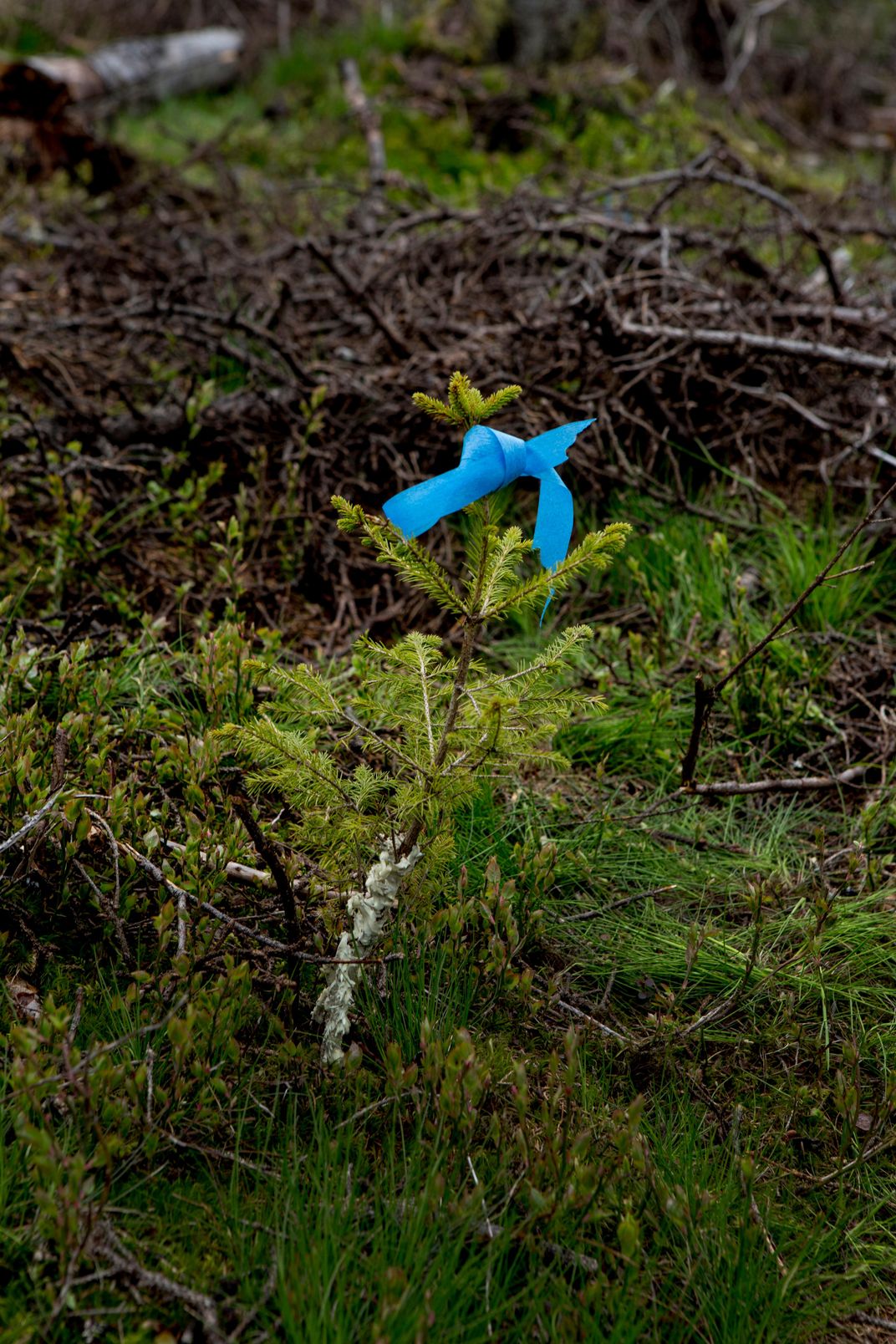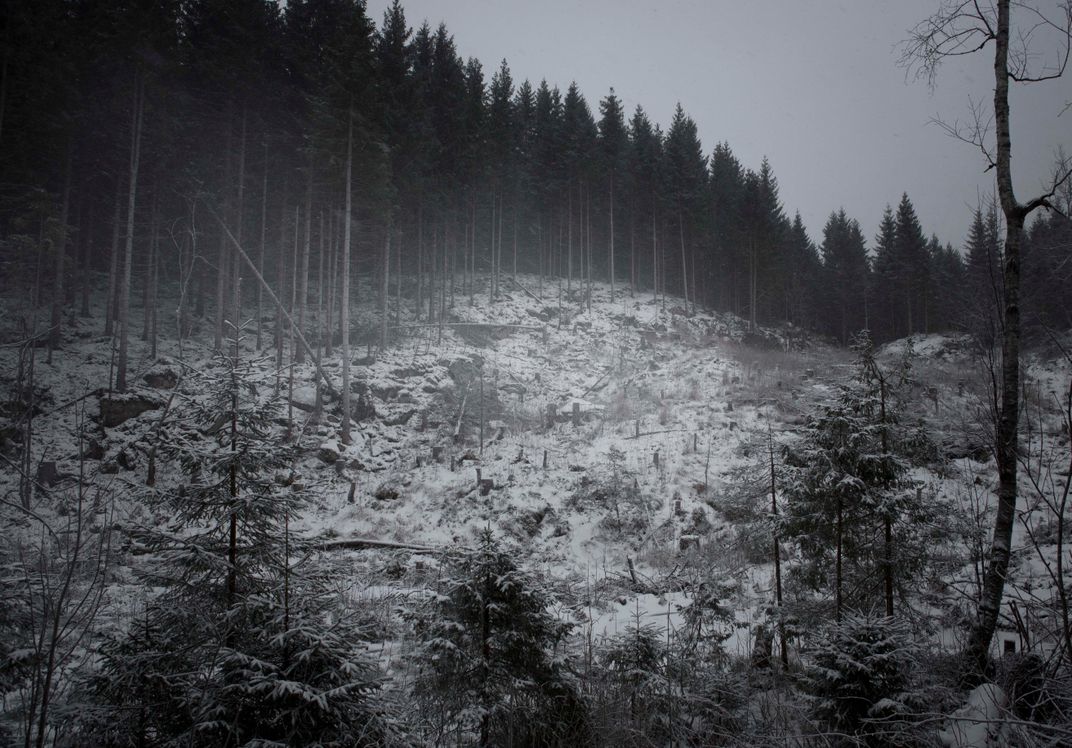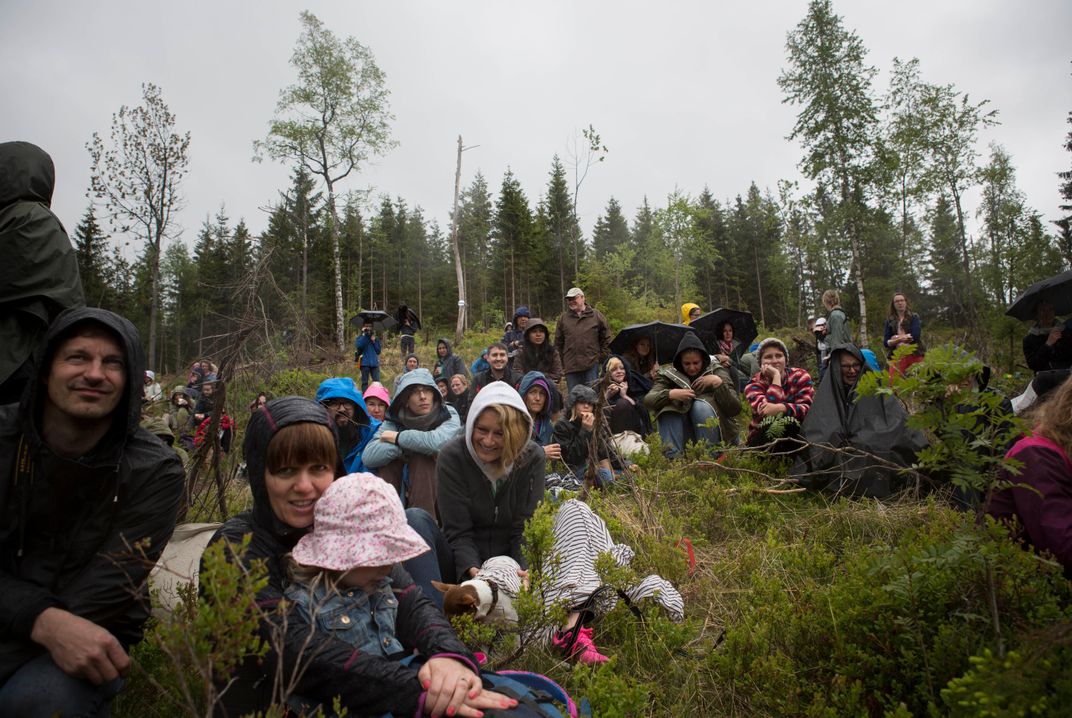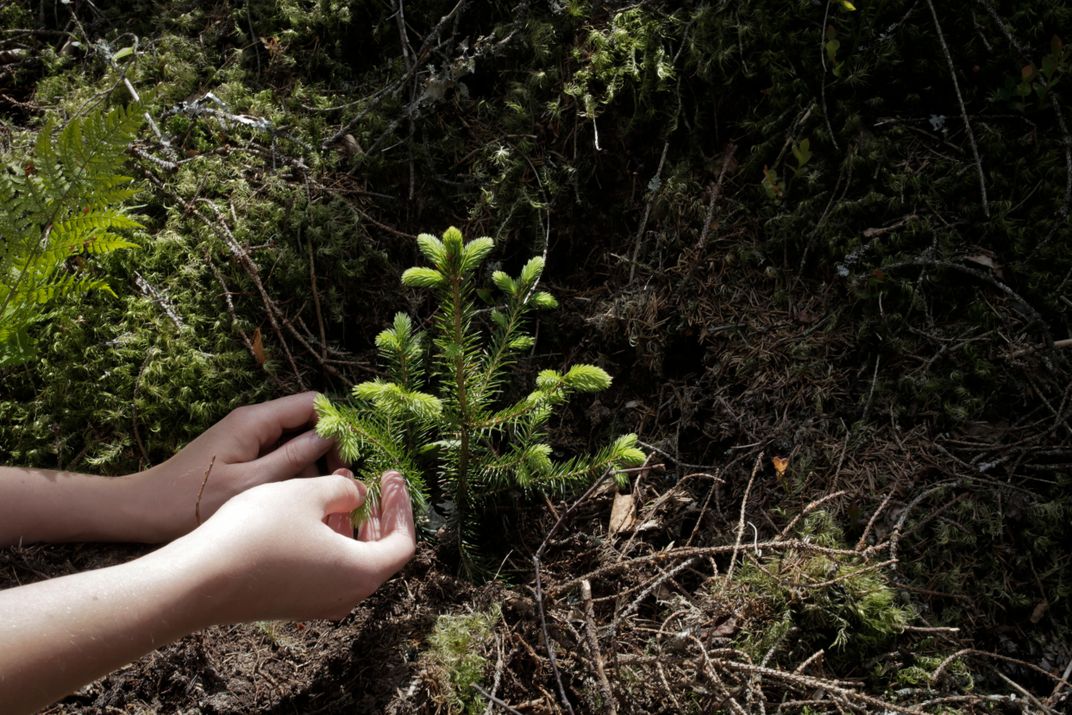After 100 Years, This Entire Forest Will Be Turned into Mystery Manuscripts
Hike through Norway’s future library, currently in the form of baby trees
In 2014, Scottish artist Katie Paterson started a new project—one that would ultimately last a century and rely solely on hope and the goodness of future generations. That project, called the Future Library, is now well underway. It will result in an anthology of 100 books, printed 100 years in the future, in 2114, with paper from trees out of a newly planted forest in Norway.
Here’s how it works: Every year until 2114, the Future Library Trust (the body controlling the project) will pick a new author to contribute a manuscript. That manuscript will be held unopened until the century has passed, at which point the Future Library forest will be cut down and processed into paper and used for those 100 books. Until that time, no one is allowed to open the books or read them. The only things known about each manuscript will be the title, the author’s name, and some idea of how thick the manuscript is.
At this point, three books have been commissioned. The forest is in its infancy—old growth trees were torn down outside of Oslo to make room for 1,000 spruce saplings, which are now tiny three-year-old trees. The wood that was removed is being used to create a new public library in Oslo by the waterfront, with a special room in it just for the Future Library manuscripts, which will be held in illuminated shadow boxes along the walls. Each author is selected from an international pool chosen by the Trust, one author per year, until the books are ready to be printed.
In the meantime, before the anthology of books is printed, visitors can come to the forest and watch it grow. According to Anne Beate Hovind, the chair of the Future Library Trust, the forest already draws annual pilgrims.
“Right now it’s all baby trees, they’re only three years old,” she told Smithsonian.com. “But they are growing. It’s quite funny because when we planted them we were sitting in all this open space, and then we realized that in 20 years, they might be our size and we won’t see each other. The space will change of course, we just didn’t realize it before we were sitting there and thinking about it.”
That change, and the risks that come with it, is one of the major points of the artwork. Beate Hovind points out that there’s nothing anyone can do to make sure the project reaches completion. Only the Trust is in place to keep the project going—and trust is exactly what’s needed to see this plan past its infancy.
“We just have to trust everything will work out,” she said. “I have to trust the coming generations. You can’t have any guarantees. I’m trying to do the best I can right now to ensure that we will last and people will learn to love it and take on the job when I’m dead. I think it’s an exercise of trust for us but it’s also a mutual trust. The generations to come have to trust that I’m doing this now properly.”
But regardless of how the current and future Trust play out, the project has inherent risks all its own. Trees are part of nature, and nature is fragile and susceptible to a thousand unknowns—both natural and human inflicted wounds that could destroy the project in its tracks.
“It’s a bit of an exercise in not being in control of nature,” Beate Hovind said. “It can be too windy or the forest can burn. It can be threatened by the city wanting to build houses because it’s just on the outskirts of Oslo. A lot of things can happen, but I believe so strongly in this idea that I think there’s no way it will fail. I think it’ll be really hard, since the whole world is watching this work, to make decisions that are not in favor of continuing the forest.”
And in just under 100 years when the trees are cut down, the new Trust will have a lot of decisions to make: how to store the books, how many anthologies will be printed overall (Beate Hovind thinks the forest will produce three or four anthologies, about 4,000 books from the 1,000 new trees), as well as if and how the books themselves will be distributed.
In those unknowns, and in those challenges and questions, Beate Hovind sees an overwhelming sense of hope and joy—and the opportunity to help people become more stable than before the project existed.
“It’s a really hopeful project,” she said. “It takes for granted the idea that there will be people, there will be forests, and there will be books in 100 years... We need these kinds of long-term projects so we can slow down. So we can stay grounded and make grounded decisions. We are still human. There’s still nature we need to look after.”
For anyone who wants to see the forest today, or any time until 2114, it’s located in the Nordmarka forested area just north of Oslo, a 30-minute hike from Frognerseteren Station.
Planning Your Next Trip?
Explore great travel deals
Smithsonian magazine participates in affiliate link advertising programs. If you purchase an item through these links, we receive a commission.
/https://tf-cmsv2-smithsonianmag-media.s3.amazonaws.com/accounts/headshot/JenniferBillock.png)





/https://tf-cmsv2-smithsonianmag-media.s3.amazonaws.com/accounts/headshot/JenniferBillock.png)